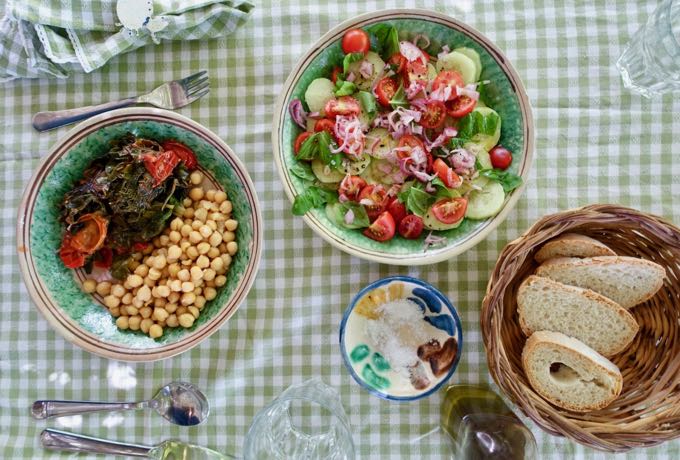
One of my favorite sources of recipes is taking to people at markets. The people there are either shopping for the next meal (and so thinking of cooking) or else selling ingredients (and so thinking of cooking). In a country that is obsessed with their next meal, the markets of Italy are the epicenters for getting advise on how to best deal with what’s in season.
What really cracks me up is how passionate people are about recipes. I can’t tell you the number of times, as I was paying for, say a kilo of small white eggplants or a bag of fresh shelling beans, and asked the vendor how he or she would cook them, that a fight has started. Just as the vendor would begin to tell me a recipe, someone in back of me would elbow their way to the front to add their two bits. While others in the back would start shouting at me, things like “no, not garlic, onions!” or “you have to use lemon juice, never use vinegar!”.
More often than not I go home with a basket full of ingredients and a notebook full of recipes.
The main thing that I take away from these sessions, though, is a ‘way’ of cooking, more than a specific recipe (although I get those too). For instance, one of the first recipes I learned while visiting Domenico’s mother in Bari was the traditional Fave e Cicoria. A seemingly simple (dare I say boring?) plating of boiled greens on one side of the plate and puree of dried fave beans on the other. When made correctly (with bitter, winter chicory and fave cooked to silky perfection) it is heaven on a plate.
Over the years though, I’ve taken this ‘idea’ of greens and beans, and run with it. I”m not sure if the ladies in the market of Bari would agree with my changes. They probably wouldn’t yell at me or anything. But I have a feeling they would, at the very least, shrug their shoulders in mild dissaproval.
This past weekend up in Umbria I harvested a huge bunch of Swiss chard from the vegetable garden, and ‘stewed’ it, following one of my mother in laws Pugliese recipes for broccoli greens. On the other side of the plate? Simply cooked chickpeas. It wasn’t the same as Fave e Cicoria. There wasn’t the strong contrast of bitter and bland. I didn’t even have the contrast of smooth and rough. But it was still a perfect pairing, and makes a delicious (and meatless) main course.
Also? I love the way the dark greens and light legumes look on a plate.
Here follows my recipe, but feel free to improvise. Any greens will do, really. The trick is that you really do want to cook them. This is not the dish for slightly wilted greens. You want them good and cooked. Broccoletti would be perfect, as would spinach. Chicory is obviously traditional. On the legume side of the plate you could substitute almost any bean, but do try to go for quality. (and yes, I mean starting out with dried beans, not canned). If you want to go the pureed route and can’t find shelled dried fave beans, you can even use split peas.
Traditionally, in Puglia, they use the semi dried, thick skinned tomatoes that are thrown in almost everything for a whammy of umami. I used cherry tomatoes from our garden because we were drowning in them (don’t hate me). If it’s not tomato season, and you don’t have a rope full of semi dried tomatoes hanging from your ceiling, then use canned tomatoes. Imported canned cherry tomatoes if you can find them, but regular san marzano will be fine too. If you do use canned tomatoes, then also use the juice from the can.
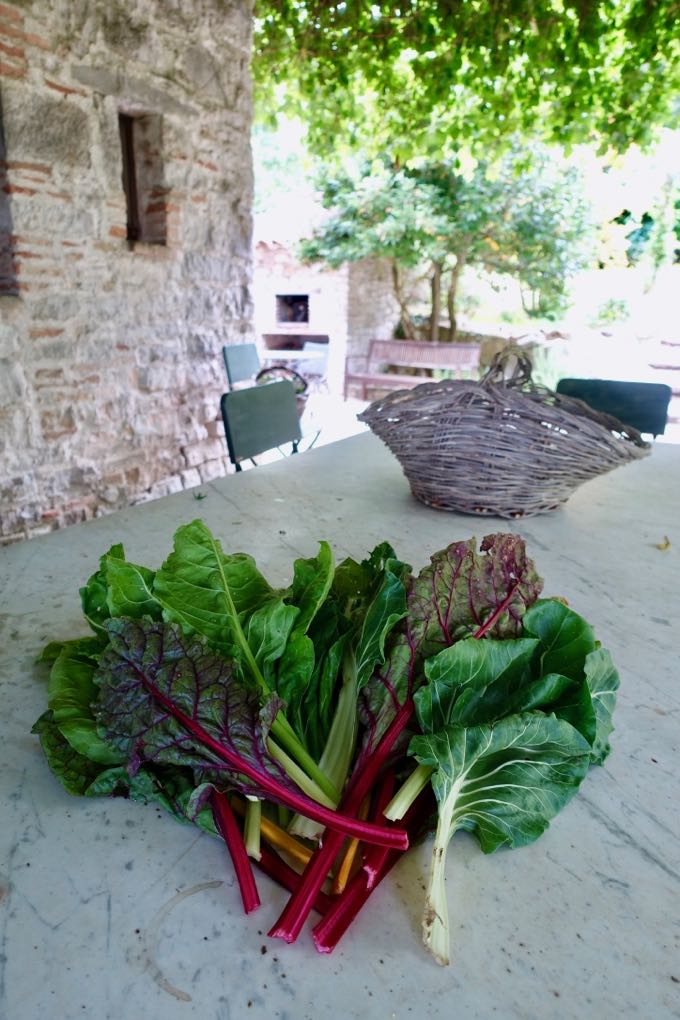
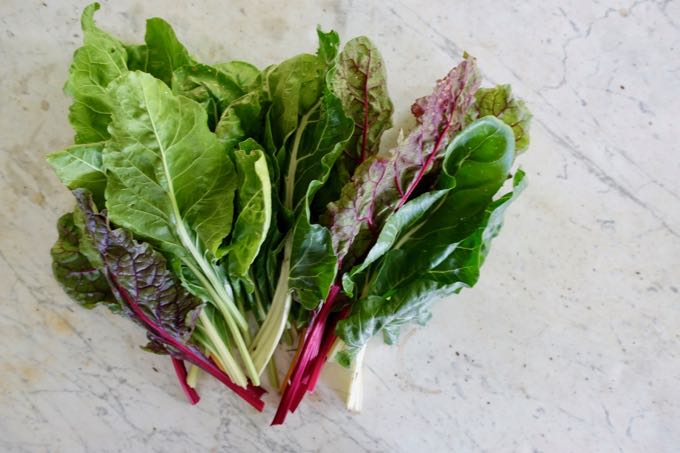
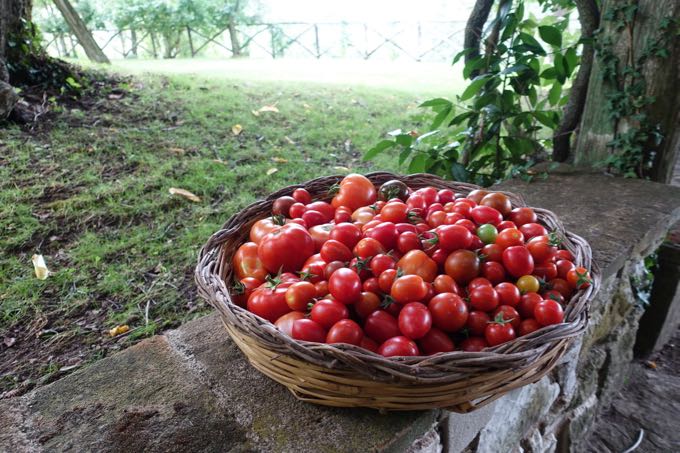
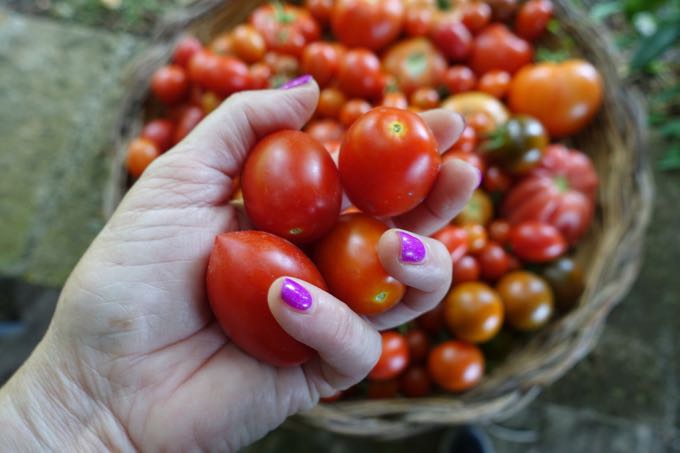
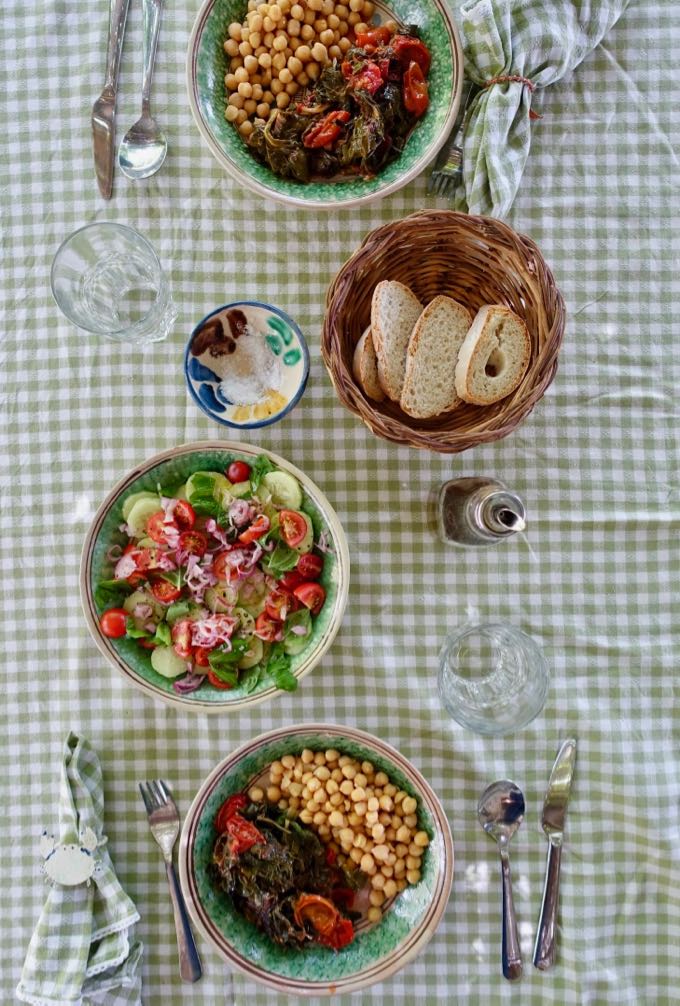
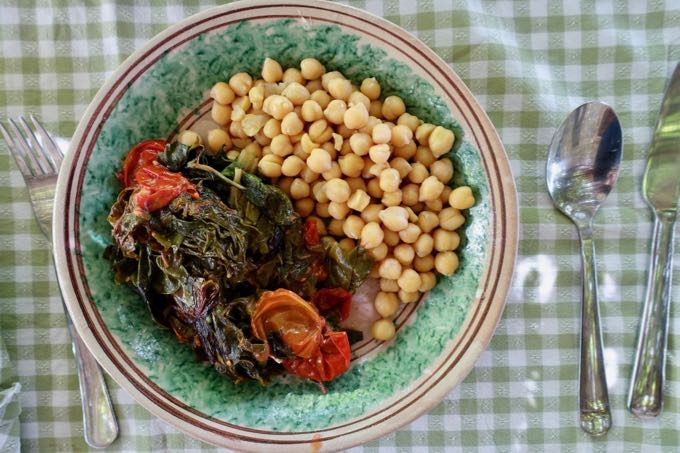
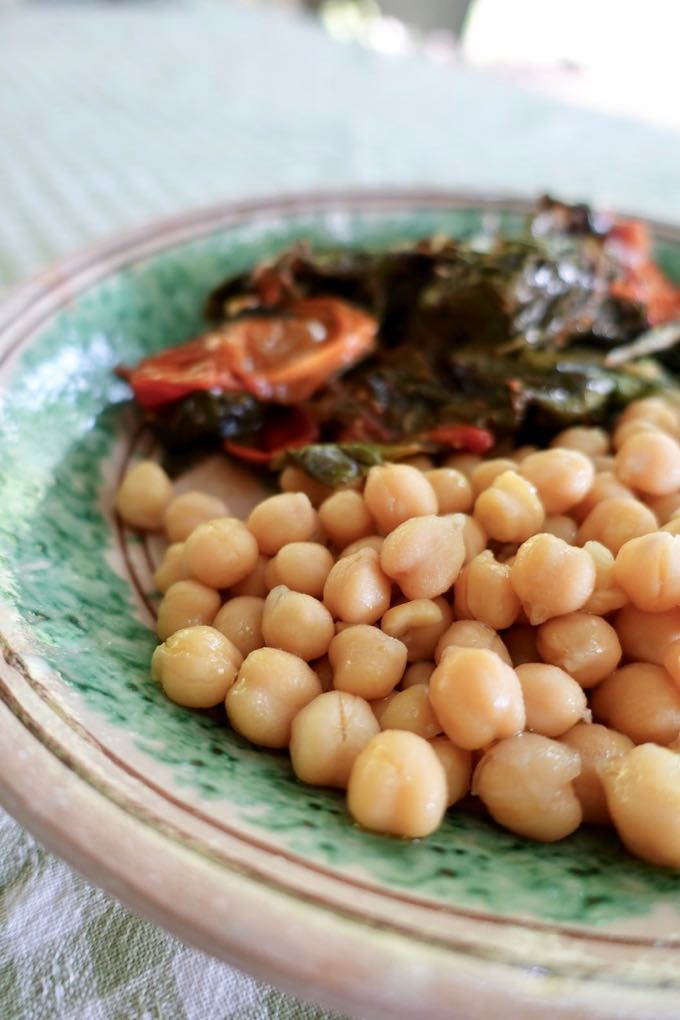
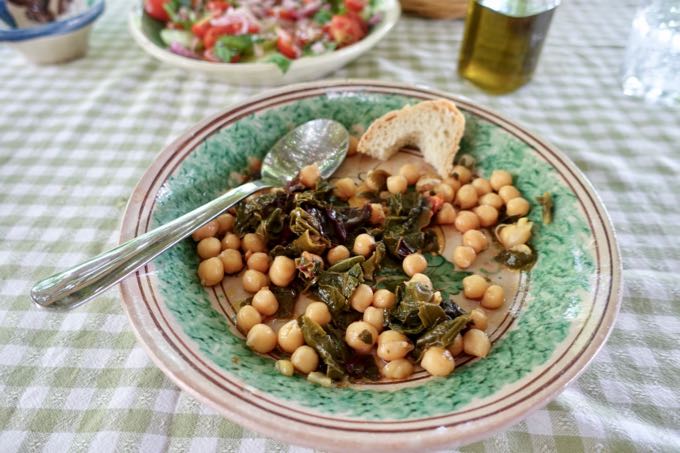
Yield 4
Ingredients
- 1 1/2 cup dried chickpeas
- 2 bay leaves
- 1 medium yellow onion, peeled and cut in half
- 3 cloves garlic (you can leave the peel on)
- 1 teaspoon kosher salt
- 1/4 cup extra virgin olive oil
- 2 cloves of garlic, chopped
- 1/4 teaspoon hot pepper flakes
- 1/2 pound cherry tomatoes, split in half
- 1/2 teaspoon salt
- 1 1/2 pounds Swiss chard, trimmed of tough stalks
Instructions
Place the dried chickpeas in a big bowl of water for at least 6 hours or over night.
Drain the chickpeas, rinse them, and place them in a large heavy bottomed pot, and cover by 2 inches with water.
Bring to a simmer. The chickpeas will give off their starch in the form of foam. Using a spoon, scoop this up and discard. Once the foam stops forming, add the bay leaves, onion, garlic and salt. Let simmer over very low heat until the chickpeas are very tender. This will usually take at least an hour, or even more if your chickpeas are older. When they are finished cooking, let cool in their water.
In the meantime prepare the greens.
Pour the olive oil into a large, saute pan with high sides or pot and add the garlic and red pepper flakes. Over medium heat cook until garlic begins to become fragrant (about 4 minutes). Add the tomatoes and salt, and continue cooking about 10 minutes, until the tomatoes have begun to break down. Add the greens. They will fill the pot, but just mash them down and cover. After a few minutes uncover and give them a good stir. They should have reduced quite a bit. Add 1/4 cup of water, cover and let stew for at least 30 minutes. You want the greens to be really good and cooked.
To serve: Place some of the greens and some of the chickpeas in each person’s dish (a pasta bowl). I use a slotted spoon to scoop up the chickpeas, and use tongs to get the greens. What you are aiming for is a dish that is half beans and half greens. Serve with olive oil on the table, which should be swirled abundantly on top.
The plates I used during this meal are made buy Giacomo Alessi, who has a studio in Caltigirone in Sicily. I bought them from both Alessi and also, more recently, a small shop in Noto, Angolo di Nina.
Giacomo Alessi
Via Francesco Schiciano 10
Caltagirone , Sicily
+39.0933.316.94
International Customer Service: +32.470.2520.16
Angolo di Nina SantoroCorso Vittorio Emanuele 154
Noto, Sicily
+39.0931.574.055
For more information about eating in Italy download my app, EAT ITALY, available for iPhone or Android. (Sicily is coming soon!)
And for more culinary and travel inspiration please buy my books:
Eating My Way Through Italy
Eating Rome
Love this kind of food to pack for my office lunch ! Grazie milla ! Tornero !
Elizabeth, I hesitate to ask the following question, it seems so un-Italian. If it’s any solace, I’m groaning at myself for bothering to ask . . . Have you ever considered including calorie information for your recipes? We have made this recipe several times—it’s delicious, as all your recipes prove to be. Upon revisiting this one, it seems it could be a low-calorie, healthy alternative, as well as, wonderful and tasty. Perhaps your readers will forgive my impertinence in the season of New Year’s resolutions, and also consider this an apt question or suggestion?
Sorry, but no calorie counts here. I see calorie counting as a bit of a crutch and can be misleading. Counting calories rarely leads to a life long healthy diet. It takes too much thought and doesn’t really teach you how to eat in a way that is healthy and sustainable. I”m very much about the famous Michael Pollan quote: Eat food, not too much, mostly plants. I think if you do this you’ll be ok. It’s never a matter of one recipe having more calories than the next. Also, I find that people who count calories often depend on weird processed foods like skim milk or ‘low fat cheese’ to stay in line.
SWISS CHARD + CHICKPEAS, it’s yummy and delicious food for hunger. thanks for sharing.